Our young researcher, Khushi Kesari, had the opportunity to present her paper “Painted Texts: Visual Storytelling and Script in Indigenous Manuscript Traditions” at the Gyan Bharatam International Conference organised by the Ministry of Culture from 11th to 13th September 2025.
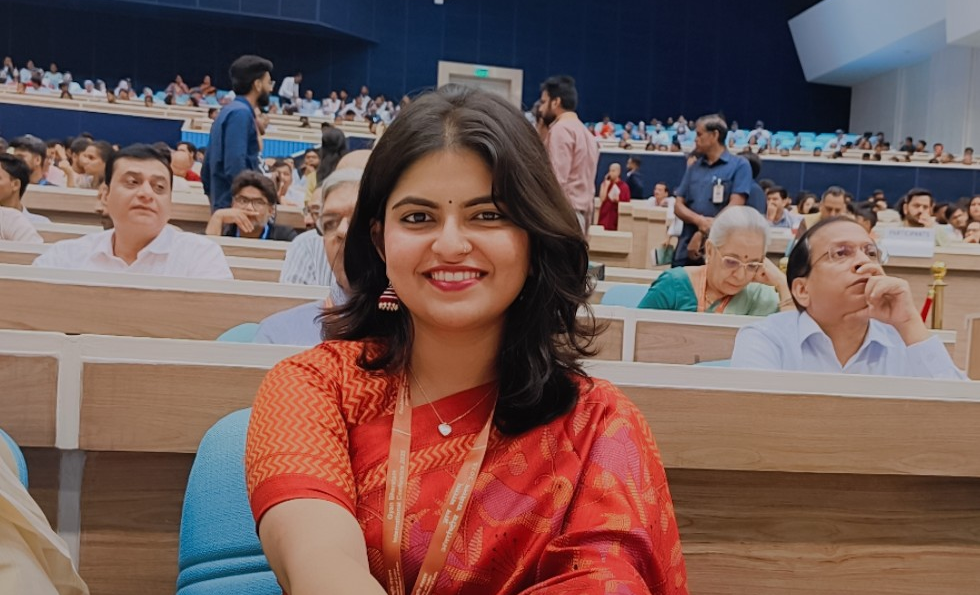
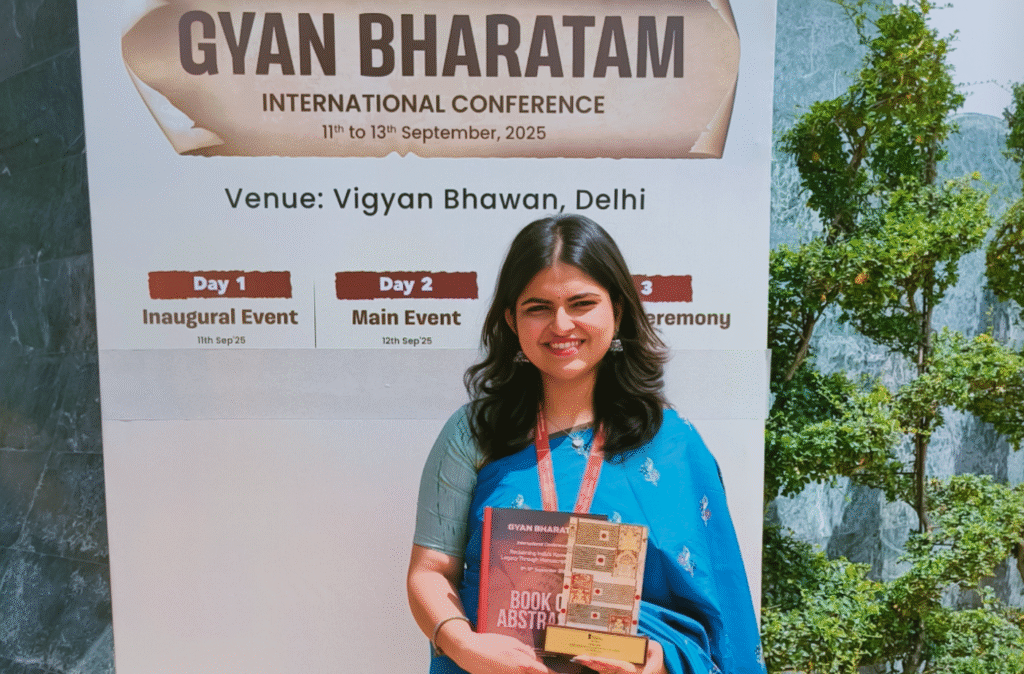
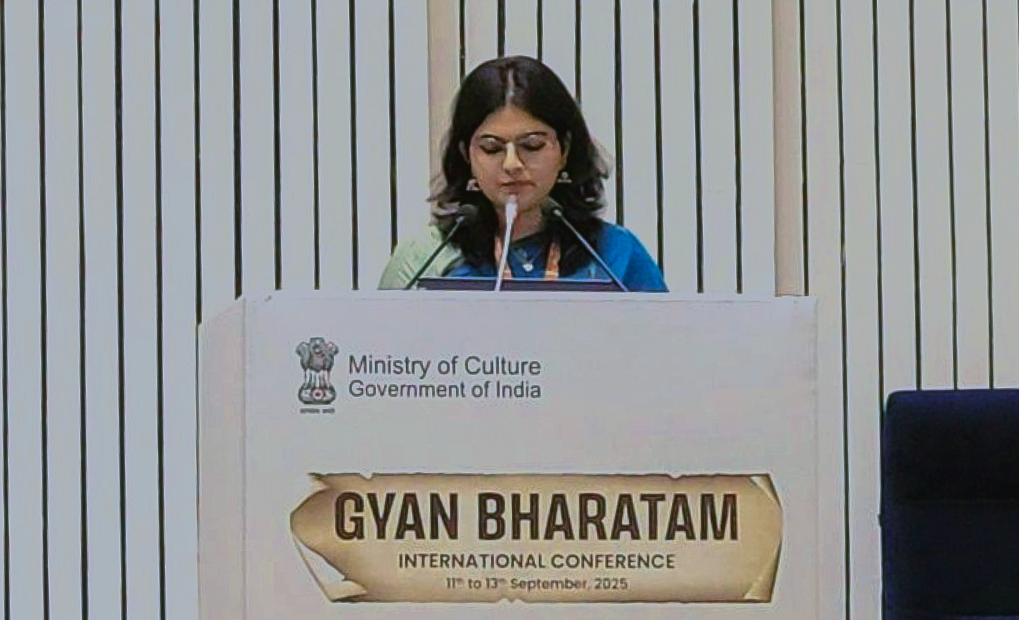
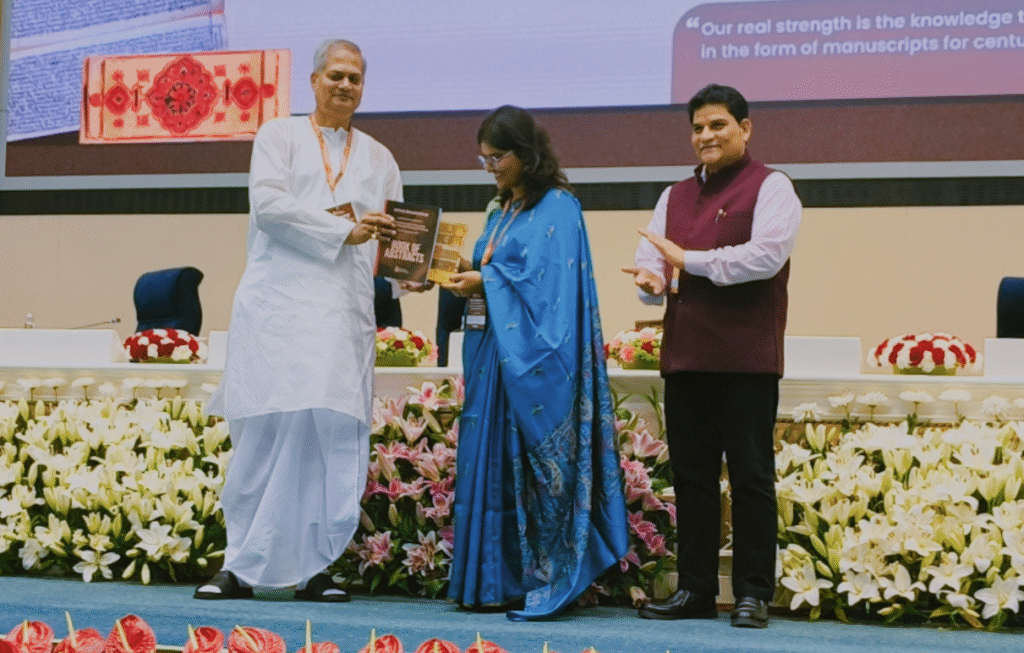
From over 1,012 abstracts submitted, only 189 were selected, of which around 100 presentations were finally delivered. To be part of such a distinguished gathering of eminent and experienced scholars was a remarkable milestone in itself. Khushi’s session, chaired by Dr. Ram Nath Jha, Associate Professor, Special Centre for Sanskrit Studies, Jawaharlal Nehru University, drew strong engagement. Her paper was very well received, sparked thoughtful discussion after the presentation, and led to an exchange of ideas and contacts for future collaborations. She was also felicitated at the conference by the respected Chair, along with Dr. K. Anil Kumar, Head of the Department of Janapada Sampada, IGNCA.
Research Theme
Her paper, “Painted Texts: Visual Storytelling and Script in Indigenous Manuscript Traditions”, examined the interplay of text and image in India’s manuscript heritage, with a focus on the palm-leaf manuscripts of Odisha and the Shāradā-script manuscripts of Kashmir. She argued that in these traditions, writing and painting were not separate elements but parts of a single communicative act, carrying cosmological, social,
and moral knowledge. By treating manuscripts as “painted texts,” her research highlighted their role as collaborative creations of scribes, painters, and artisans, as well as their function as portable archives of indigenous worldviews. The paper also addressed contemporary challenges of preservation and digitisation, underscoring the need to maintain the unity of word and image to safeguard both artistry and meaning. In this context, she discussed international standards such as IIIF (International Image Interoperability Framework), IFLA’s guidelines, and FADGI protocols, which emphasise authenticity, fidelity, and continuity in digital preservation. By combining these global frameworks with traditional practices of manuscript care, she argued for methods that honour the integrity of these fragile cultural objects while ensuring their voices continue to resonate for future generations.
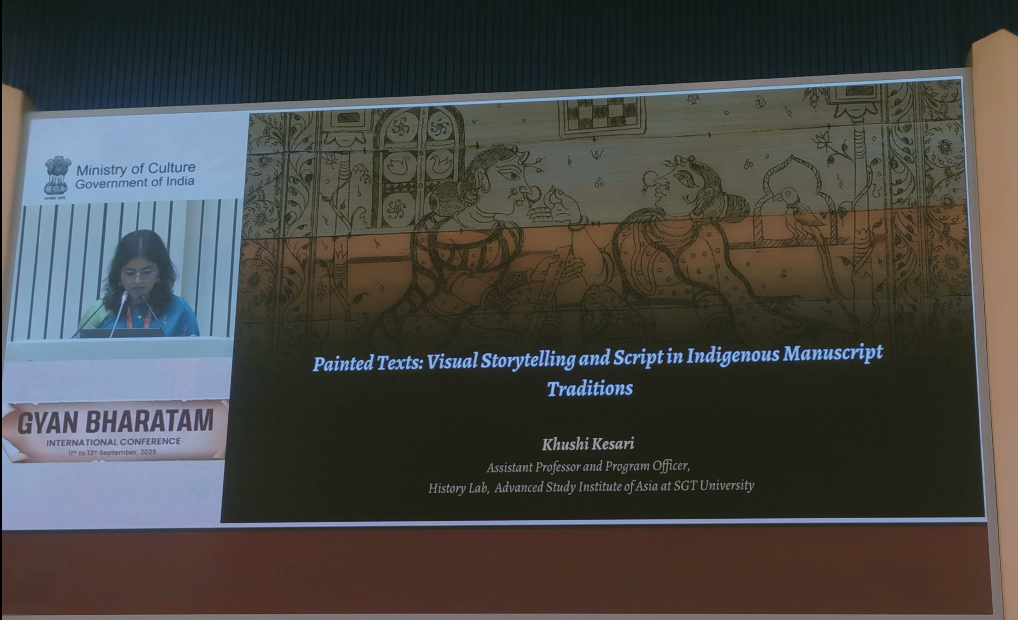
About the Conference
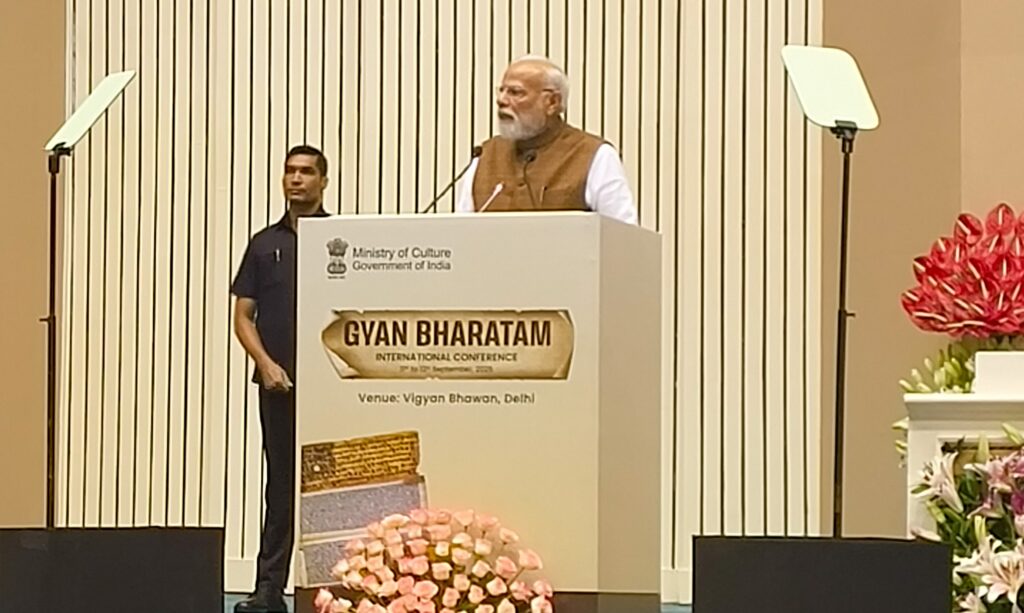
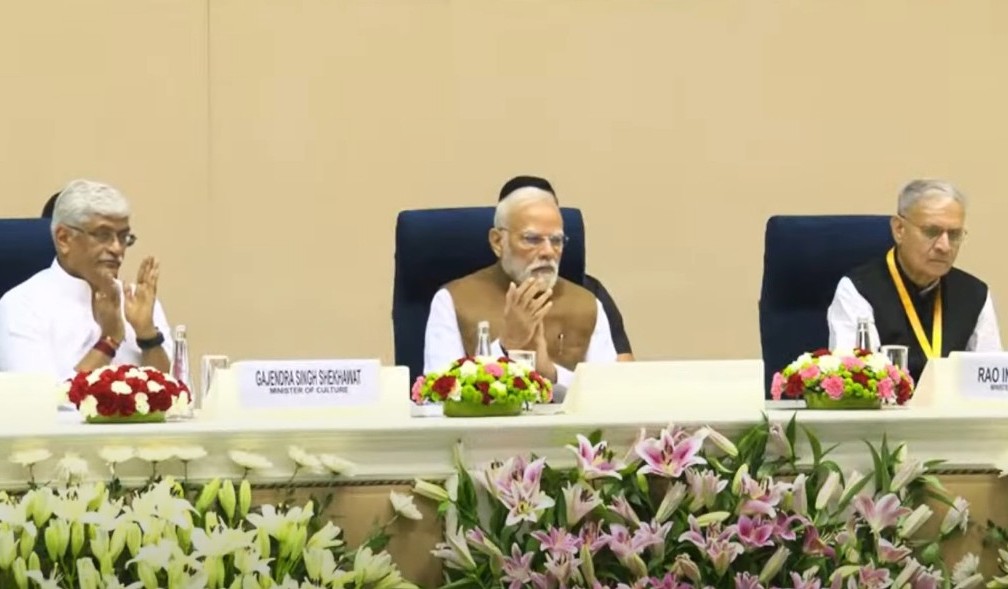
The Ministry of Culture organised the Gyan Bharatam International Conference on “Reclaiming India’s Knowledge Legacy through Manuscript Heritage” from 11 to 13 September 2025 at Vigyan Bhawan, New Delhi. The conference formed part of the larger Gyan Bharatam Mission, a landmark national initiative dedicated to the preservation, digitisation, and dissemination of India’s manuscript heritage. It brought together more than 1,100 participants, including eminent scholars, researchers, archivists, technologists, cultural practitioners, and institutions from India and abroad. Across eight thematic tracks, the event created space for rigorous discussion on manuscript conservation, cataloguing, metadata standards, decipherment of ancient scripts, cultural diplomacy, and the application of modern technologies to sustain and share India’s intellectual traditions.
The Prime Minister addressed the gathering on 12 September and launched the Gyan Bharatam Portal, underscoring that India possesses the world’s largest manuscript collection and that these works are not only records of dynasties but repositories of philosophy, science, art, and civilisational values. He stressed that India’s knowledge tradition rests on four pillars: preservation, innovation, addition, and adaptation.
The deliberations concluded on 13 September with the adoption of the Delhi Declaration, which affirmed Bharat as the land of the world’s richest manuscript traditions and pledged to preserve, digitise, and disseminate this vast cultural wealth as part of the vision of Viksit Bharat 2047. The valedictory session was chaired by the Union Minister for Culture, Shri Gajendra Singh Shekhawat, and attended by several senior dignitaries. The conference also included the unveiling of the Gyan Bharatam logo, the performance of the Gyan Bharatam song, and the felicitation of the winners of the Gyan Setu Challenge, which showcased innovative ideas for manuscript preservation and dissemination. The event was not only an academic milestone but also a collective cultural movement, aimed at reviving India’s manuscript heritage as a living tradition and positioning India as a global leader in the field.
The Delhi Declaration
The Delhi Declaration, adopted on 13 September 2025, sets out a collective pledge under the Gyan Bharatam movement to safeguard and revitalise India’s manuscript traditions. Recognising manuscripts as the living memory of the nation and a foundation of its civilisational identity, the declaration commits to their preservation, digitisation, and dissemination as part of the vision of Viksit Bharat 2047. It emphasises conserving and researching manuscripts across all scripts and languages, repatriating originals or securing digital copies from abroad, and using modern technologies for cataloguing and access. It also highlights the need to honour custodians, foster community participation, inspire public awareness, and mentor future generations, with the broader goal of positioning India as a global leader in knowledge traditions while making this heritage a source of education, innovation, and cultural pride.





